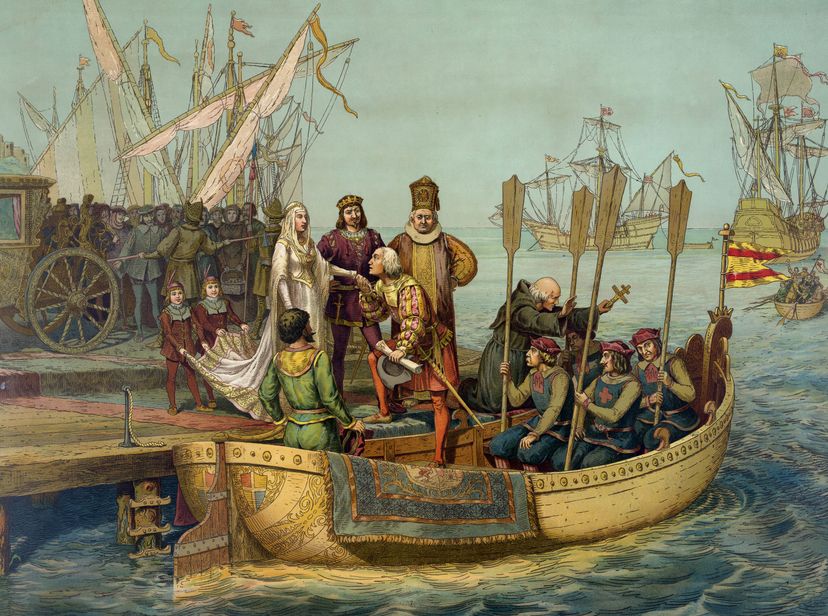
About This Quiz
Whether you consider him a visionary explorer or a barbaric invader, there's no doubt that Christopher Columbus was a fascinating guy. How much do you know about the explorer and his many voyages? Take this quiz to find out.Cristoforo Colombo was born in Genoa, Italy.
Columbus was born in 1451, so he was around 41 during his first voyage.
Columbus took four trips to the Caribbean.
Advertisement
By 1492, people had known for a long time that Earth is round. Columbus wanted to prove that you could sail around the world.
Columbus wanted to find a route to Asia by sailing west, thus opening up a new avenue for the spice trade.
The Maluku Islands in Indonesia were, at the time, the only place in the world to grow mace, cloves and nutmeg.
Advertisement
Nope. Icelandic explorer Leif Eriksson had sailed to Canada about 500 years earlier.
Columbus hit many islands in the Caribbean and areas of the Central and South American coasts, but he was never in North America.
King John of Portugal was the first to turn down Columbus. The kings of England, France and Spain also declined.
Advertisement
Columbus estimated that he could sail over, explore and return within a year.
Ferdinand and Isabella of Spain accepted Columbus' plan in 1492.
The Santa Clara was nicknamed the "Nina."
Advertisement
Columbus' fleets usually stopped to refuel and restock in the Canary Islands, off the coast of Morocco.
Rodrigo de Triana, the lookout on the Pinta, shouted "land! Land!" at 2 a.m. on Oct. 12, 1492. Columbus later claimed he had seen "a light" a few hours earlier.
The ships first reached an island in the Bahamas that they named San Salvador.
Advertisement
Due to some faulty calculations, Columbus was convinced they had reached Asia.
That first day in San Salvador, Columbus grabbed six natives because he thought they'd be good servants.
The Spaniards slaughtered and enslaved untold numbers of natives, and their diseases almost wiped out the rest of the natives.
Advertisement
The Ciguayo tribe of what is now the Dominican Republic shocked the Spaniards by fighting back when they were approached.
Columbus was convinced that it was Japan, but a few days later he decided it was China.
Columbus set off for his second voyage in search of gold with 1,200 well-armed men.
Advertisement
Columbus was convinced he had stumbled upon the garden of Eden.
Columbus' ships were beached after a storm near St. Ann's Bay, Jamaica, and rescue was very slow in coming.
Pickles were apparently an essential part of the sailors' diets, so they grew some cucumbers.
Advertisement
There was a big syphilis outbreak in Europe in 1495, a couple of years after Columbus got back. Based on the strains, researchers think the explorers were the culprits.
Historians are pretty sure that the Europeans brought smallpox, along with typhus, cholera and the measles.
The first Columbus Day was celebrated in 1892, but it wasn't made official until 1934.
Advertisement
Columbus was certainly mistreating and enslaving the native people, but it was his abuse of Spanish colonists that got him into trouble.
He was buried for the first time in Valladolid, Spain, and then exhumed and moved to the Dominican Republic, then Cuba, then to ...
Columbus' ashes ended up in Seville, Spain.
Advertisement